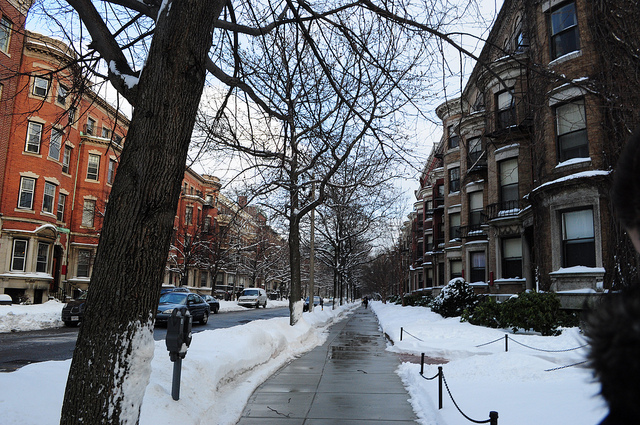Wellness Architecture: 11 Ways to Build a Healthy Home
We live in an era in which people are becoming more conscious of health. When considering how to live a healthy lifestyle, people tend to think of diets, exercise, and sleep. One aspect of health that often gets overlooked is the home. Having a healthy home is essential, and this is especially important now that people are spending more time at home than ever. Here are 11 ways you can build a home with wellness architecture.
Wellness Architecture Ideas for Your Boston Home, Triple Decker, Brownstone or Condo
1. Allow More Natural Light
Bright rooms can help lift your spirits on a bad day, whereas a dark and dreary room will only make you feel worse. To ensure maximum natural light in your home, your most-used rooms should have large windows, more than one if possible. Looking out on scenic landscapes or city skylines is a bonus, but any view with plenty of access to sunlight is good.
2. Bedrooms Designed for Better Sleep
Your bedroom can be designed to optimize your sleep by reducing sound and light when it’s time to go to bed. To reduce sounds from outside the bedroom, use rubber weatherstripping to seal the gap beneath your door, or place a large piece of furniture such as a dresser against an outside-facing wall. You can even add soundproof curtains or soundproof wallpaper. To manage the lighting, make sure your curtains are thick enough to block out any city lights.
3. Include automatic faucets
Hands-free faucets are more hygienic than traditional faucets because you don’t have to worry about touching the sink if your hands are dirty. This is more important than ever now during the pandemic.
4. Use Healthy Paints
Painting a room gives it a touch of personality, but you should make sure your paints do not contain harmful chemicals such as VOCs. VOCs are volatile organic compounds that give off harmful gasses, and these build up inside homes. They can cause health problems such as headaches, nausea, irritation in your throat or lungs, or even damage to the liver, kidneys, and nervous system. Paint with low or no VOCs are a healthier option, but you should check to make sure they do not contain any other toxic chemicals.
5. Invest in Good Ventilation
A proper ventilation system cycles indoor air and outdoor air, improving circulation and air quality in your home. The ventilation system in your home should be checked and cleaned regularly by an HVAC technician to ensure it is working effectively.
6. Reduce Outdoor Noises
Your home should be relaxing, and the last thing you need is to constantly hear cars and shouting from outside. A home with thick walls can better block out these external sounds, allowing you to work and have fun in peace. You can also install double-glazed windows, which are windows with two panes of glass separated by a small air pocket in between. Not only will this help with noises, but they also keep the warmth inside for longer, making frosty Boston winters more bearable.
7. Grow Indoor Plants
Indoor plants add a touch of the outdoors to your home while naturally purifying your air. They also increase the humidity in your room by releasing water, which helps reduce respiratory illnesses.
8. Improve Kitchen Air Quality
People don’t often consider range hoods when thinking about kitchen appliances, but the range hood is essential to keeping the air in your kitchen clean. The exhaust removes smoke, pollutants, and excess heat from your cooking. It also makes your kitchen easier to clean by removing grease, preventing a buildup that could lead to contamination by bacteria or mold.
9. Use Environmentally Friendly Materials
By making sure your home uses eco-friendly building materials, you help make the world just outside your house a healthier place. Drywall, the most common type of interior wallboard, is made by a process that consumes a lot of energy, contributing to high CO2 emissions. Luckily, there are drywall options with lower CO2 emissions. You can even use drywall made from agricultural waste.
10. Install Sensors for Air Quality
Smoke detectors are critical in every home, but a carbon monoxide detector is equally important. Carbon monoxide poisoning can be fatal, and since the gas is colorless and odorless, it can be hard to know when it is building up in your home without a detector.
11. Add a Fitness Space
Because of the pandemic, many gyms are closed and people may not feel safe going back to the ones that are open. In order to maintain a healthy exercise regimen, set up a dedicated place in your home for fitness. You can buy equipment or clear some space for a yoga mat, whatever works best for you.
Try any of these ideas and see what works for you. By creating a healthier home, you’ll be happier spending your time inside your house.

